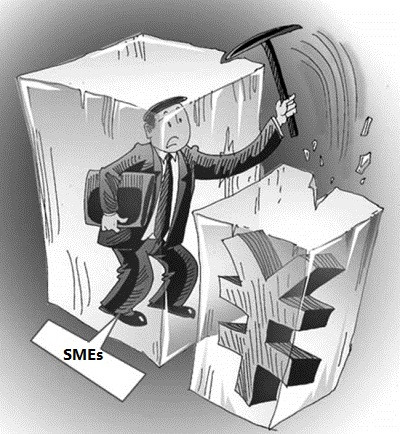(Ecns.cn) – The Central Bank of China has hiked interest rates and raised the reserve requirement ratio for commercial banks many times since October 2010. Because of this, Chinese authorities have frozen a record high of 21 percent of bank deposits, causing severe financial difficulties for many small- and medium-sized enterprises (SMEs).
In Wenzhou of east China's Zhejiang Province, many SMEs are struggling to survive a bankruptcy wave. The China Banking Regulatory Commission (CBRC) and related authorities in Zhejiang denied this, although they admitted that the SMEs are currently confronted with some difficulties.
But the grim plight of SMEs – not just in Wenzhou, but also in other economic regions such as the Yangtze River and the Pearl River Deltas – does not appear to be exaggerated.
However, this time the situation is different from the bankruptcy wave caused by the financial crisis in 2008; this time it is affected by complex factors such as tightening liquidity, high inflation, higher labor costs and the rising price of raw materials.
"On the verge of failure"
If the central government’s economic tightening policy continues, nearly 40 percent of SMEs in the area may at least partially halt operations, and some may even suffer bankruptcy soon, said Zhou Dewen, head of the association for SMEs in Wenzhou.
Zhou described the current situation as “on the verge of failure”. He said if the government does not give special support to struggling businesses, many SMEs will be defeated by challenges this time.
After the implementation of the reform and opening up policy in 1978, China experienced a decline in state-owned enterprises (SOEs). SMEs gradually emerged to play a vital role in the development of the country's economy.
But even though they have made great contributions to China's economic growth, SMEs still have far less access to formal finance and credit than large enterprises, especially SOEs.
This can be seen in a number of cases. For example, during the global financial crisis in 2008 SOEs benefited from a series of government policies, while SMEs were forced to bear the brunt of credit restrictions.
But this time it is even worse. Although the government created more financing opportunities for SMEs in early June, making it a little easier to get loans than before, the measures were hardly sufficient to save the large number of cash-strapped businesses since tightening liquidity is only one of many factors that have led to the current situation.
Some SMEs embrace new business models
Underground lending is not a good choice for SMEs, and because the challenges that many of them face come from weak external demand, the best choice now may be to transform their business models and focus on internal demand.
In the past, most SMEs in Wenzhou earned money mainly through exporting goods overseas. But the financial crisis in 2008 had a major impact on that market, causing SMEs to suffer massive losses.
In 2007, Fan Xiaomeng established a company mainly doing the foreign trade of costume. His company also suffered heavy losses during the global financial crisis, during which production orders from Western countries declined. "The net margin dropped from the previous 10 percent to 3 or 4 percent," he added.
Not long after he decided to change his business model. "I found that the external business model focuses on providing quality service, while the internal business model is concerned with expanding the market," Fan explained, adding that his company survived and is now developing rapidly.
The government should do more to enhance the market-oriented economy and create a much fairer environment for different enterprises, in order to protect the benefits of SMEs as well as SOEs.


















